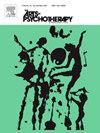韩国创造性艺术治疗监督的范围审查
IF 1.5
3区 心理学
Q3 PSYCHOLOGY, CLINICAL
引用次数: 0
摘要
本研究旨在通过回顾相关文献,分析研究主题和内容,找出韩国创作艺术疗法监管的研究现状。目的是确定创造性艺术治疗监督的关键因素,并提出未来的研究方向。为此,以“临床监督”、“监督”等关键词,在国内三大学术平台上搜索了截止到2024年6月发表的论文。共检索到484篇论文,应用排除标准筛选出69篇进行分析。自2005年韩国开始进行监督研究以来,大多数研究都集中在艺术和音乐治疗上,可以分为三类。首先,研究监督者和被监督者——监管的关键参与者——的研究占被审查论文的一半,重点关注他们的观念和监管特征。二是对监督类型的研究,确定了个人和团体监督、同伴监督、自我监督、现场监督、远程监督和艺术监督六大主要类别。这些研究突出了每种类型特有的具体考虑因素。第三,在缺乏以不同哲学和心理学理论为基础的研究的情况下,对提高艺术治疗师专业能力的因素、能力模型和趋势分析的研究为韩国充分的创造性艺术治疗监督奠定了基础。本文章由计算机程序翻译,如有差异,请以英文原文为准。
A scoping review of supervision in creative arts therapies in Korea
This study aimed to identify the current research on creative arts therapies supervision in Korea by reviewing relevant literature and analyzing research themes and content. The goal was to identify critical considerations for creative arts therapies supervision and propose future research directions. To this end, papers published up to June 2024 were searched on three major Korean academic platforms using keywords, such as the names of various art media combined with “clinical supervision” and “supervision.” A total of 484 papers were retrieved, and after applying the exclusion criteria, 69 were selected for analysis. Since the inception of supervision research in Korea in 2005, most studies have focused on art and music therapy, which can be classified into three categories. First, studies examining supervisors and supervisees—key participants in supervision—accounted for half of the reviewed papers, focusing on their perceptions and supervision characteristics. Second, research on supervision types identified six primary categories: individual and group supervision, peer supervision, self-supervision, on-site supervision, remote supervision, and art-based supervision. These studies highlighted specific considerations unique to each type. Third, in the absence of studies grounded in diverse philosophical and psychological theories, research on the factors that enhance art therapists’ professional competencies, competency models, and trend analyses lays the foundation for adequate creative arts therapies supervision in Korea.
求助全文
通过发布文献求助,成功后即可免费获取论文全文。
去求助
来源期刊

Arts in Psychotherapy
Multiple-
CiteScore
3.20
自引率
11.10%
发文量
66
期刊介绍:
The Arts in Psychotherapy is a dynamic, contemporary journal publishing evidence-based research, expert opinion, theoretical positions, and case material on a wide range of topics intersecting the fields of mental health and creative arts therapies. It is an international peer-reviewed journal publishing 5 issues annually. Papers are welcomed from researchers and practitioners in the fields of art, dance/movement, drama, music, and poetry psychotherapy, as well as expressive and creative arts therapy, neuroscience, psychiatry, education, allied health, and psychology that aim to engage high level theoretical concepts with the rigor of professional practice. The journal welcomes contributions that present new and emergent knowledge about the role of the arts in healthcare, and engage a critical discourse relevant to an international readership that can inform the development of new services and the refinement of existing policies and practices. There is no restriction on research methods and review papers are welcome. From time to time the journal publishes special issues on topics warranting a distinctive focus relevant to the stated goals and scope of the publication.
 求助内容:
求助内容: 应助结果提醒方式:
应助结果提醒方式:


